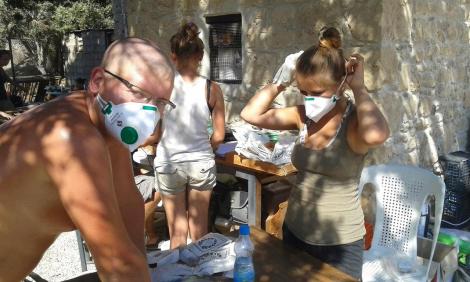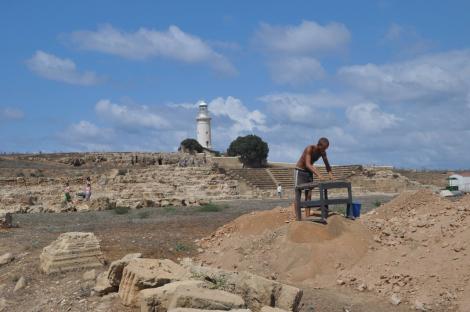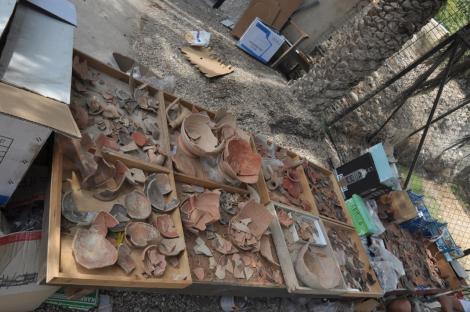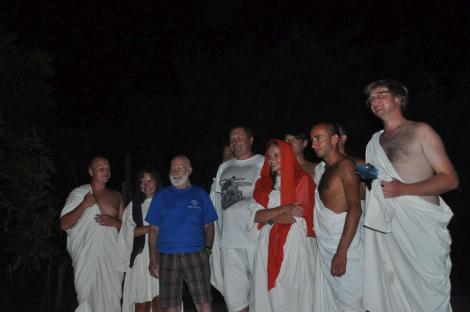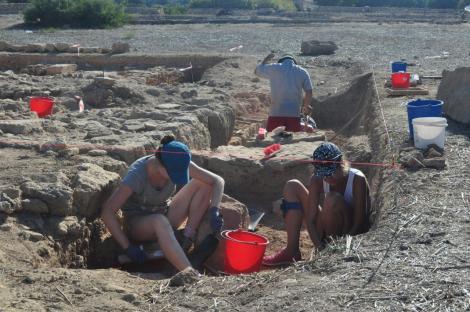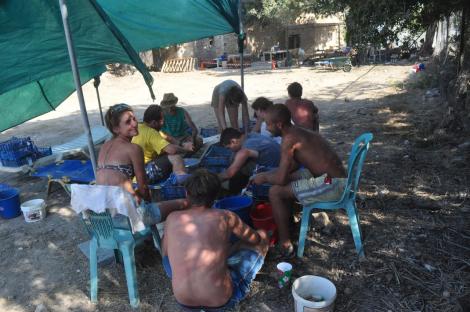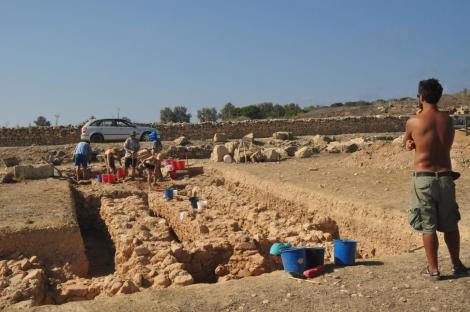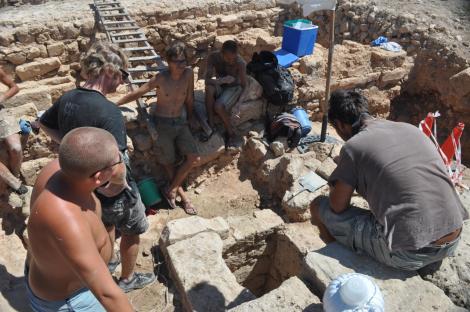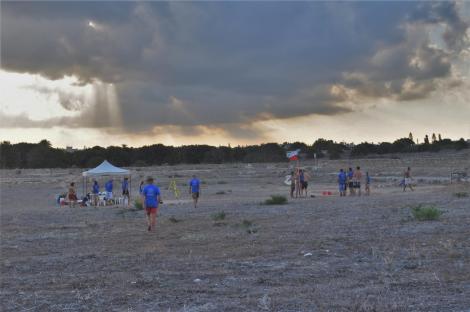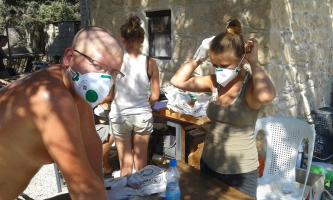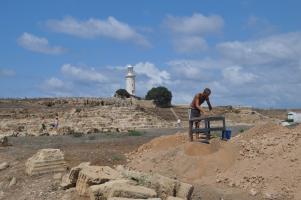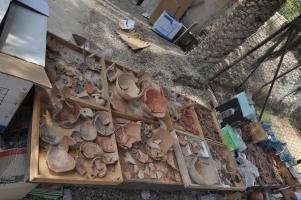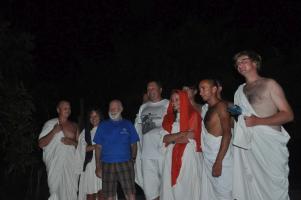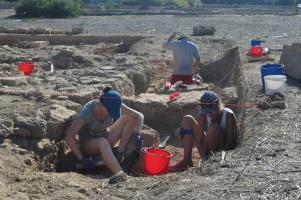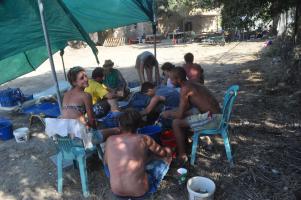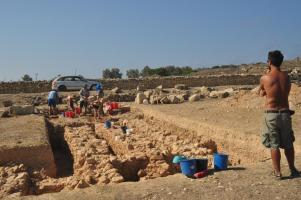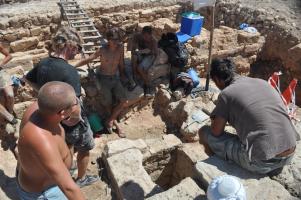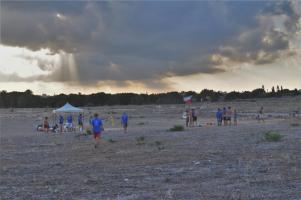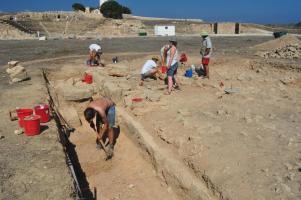In 2014 the fourth season of excavations of the Department of Classical Archaeology of the Institute of Archaeology, Jagiellonian University (JU) in Kraków, Poland, took place within the Paphos Agora Project and aimed to explore and study the Agora of ancient city Nea Paphos, the capital of Cyprus in the Hellenistic and Roman periods.
The exploration and research, as well as the conservation works of the 2014 season, were conducted between Aug. 8th and Oct. 10th. The team led by Professor Ewdoksia Papuci-Władyka comprised nearly 60 persons (20 staff, 15 student trainers, 23 volunteers - all in different terms). The campaign's aim was not only to excavate and provisionally study the uncovered material, but also to make a preservation work performed by members of the Institute's staff and an implementation of new non-invasive techniques of research (partly tested already in 2013 season) done by specialists from AGH University of Science and Technology in Krakow (laser scanning of trenches) and J. Kochanowski University in Kielce (georadar prospection). Thus, the research has an interdisciplinary character.
The field works took place in all three trenches, but in Trench II they were limited to the exploration of the well in room 13, which had already started in the previous season during which it had been interpreted as a cistern, but the exploration in 2014 has clearly shown that it is definitely a well. This well was excavated to a depth of 7 metres, and at the depth of 5.95m, the ground water table was reached, affecting the exploration significantly: the use of a pump was necessary and we are deeply indebted to the local fire brigade for their assistance in this matter. The well was filled in with rich movable material and earth. Initially, pottery of different categories: fine wares (e.g. table ware with slip: Colour Coated Ware and Eastern Sigillata A etc.), plain wares, kitchen pottery, transport amphorae, of which some bear stamps were found. We also found terracotta figurines, coins, metal objects etc. In the last category of metal objects, there were three very interesting sling bullets, two of them decorated with relief showing scorpions and the third one with a representation of thunderbolt. On the basis of pottery and amphorae stamps it can be stated that the material of the well constitutes a homogeneous, closed late Hellenistic deposit dated from the late second to the mid-first centuries BC. From the architectonic point of view, the construction of the well is very closely connected with the first stage of existence of the stylobate of the east portico of the Agora, and so the initial date of this portico should probably be moved back even earlier than it was postulated last year, i.e. to the Hellenistic times. However, it should be noted that this hypothesis will need to be confirmed after all the material, particularly the coins numbering almost 60, have been studied.
Large scale works have been undertaken in Trench I, situated in the central part of the Agora square. The excavations cleared and enlarged squares traced and partly excavated by K. Nicolaou in the seventies of XX century. These squares were combined with the current excavation's squares excavated within Trench I in 2011. The Cypriot archaeologist had stated that it was likely that an altar had been uncovered. Our research has showed that this was not an altar but part of large, very well constructed building, probably the temple oriented East-West. The mode of walls construction, the so called compartment type, which is very characteristic for Ptolemaic period, and uncovered material (mainly pottery) point to Hellenistic times. It seems that the building/temple was in use for long period and was rebuilt several times. In close vicinity to this building - to the south - a large pit was discovered filled in with pottery and many terracotta figurine fragments of which the latest can be dated to the late second and early first centuries BC. It seems that in this time the building was rebuilt and the material of no use was thrown into the pit. In general, in Trench I, 26 architectonic structures of which 12 are walls or fragments of walls and the rest were floors etc., and 124 contexts have been explored this year.
The exploration of Trench III continued on structures discovered in the previous year and aimed to reach the bedrock where possible. In addition, an extension of the trench to the south was traced which aimed to uncover the possible continuation of walls found in 2013 to the south and their stratigraphic relations with the stylobate of the south portico of the Agora. As a result of this research, part of a large building erected on cut bedrock was uncovered composed of at least two rooms and whose west wall was the extremely well-constructed wall (S 302) found in 2013. This building was built before the construction time of the south portico of the agora, because the south part of the wall S 302 goes underneath the stylobate. The preliminary analysis of the pottery points to the fact that it was erected probably at the late Classical/Early Hellenistic period i.e. in the beginning of the city, and was functioning also after the erection of south portico in the first phase of the agora. The final date of the operation of the building can be determined to possibly at the turn of the second and first centuries BC. Yet, it cannot be securely stated what the function of this building was; however, it seems that the hypothesis of a type of warehouse, advanced last year, can be sustained. In Trench III altogether 12 new structures were found: amongst them five walls, two floors, one channel, levelling screed etc., and 194 contexts have been explored.
Starting from 2013, the project aims also focused on the development of new system of documentation called by this team, The Archaeological and Archaeometric Information System for Paphos Agora Project (AAIS for PAP). This system will join standard archaeological and architectonic documentation with Digital Elevation Model (DEM), correlated with the documentation database and coupled with orthophotomap running under the Geographical Information System (GIS). For this reason during this excavation campaign, like the previous one, tachymeter measurements have been taken. After the completion of the exploration (from the end of September until 9th of October) the scanning of the trenches, georadar prospection of whole Agora area and aerial photo taken with drone - hexacopter were performed.
The main result of this year's research has been the discovery in Trench I and III of two large public (?) buildings possibly erected during the Hellenistic period. Thus, we can state that we have most probably found the Hellenistic Agora of the Nea Paphos city.
Text: Ewdoksia Papuci-Władyka


